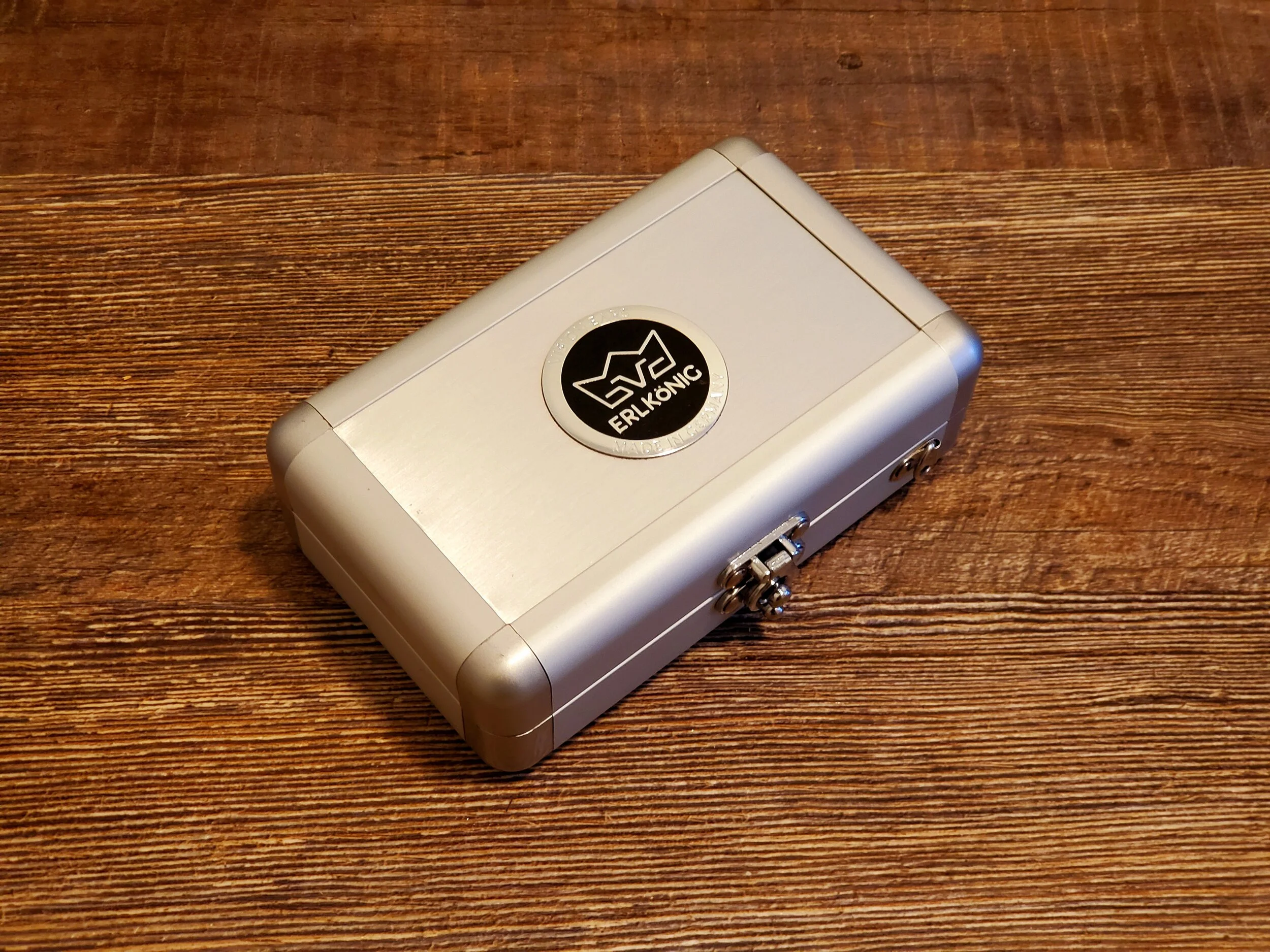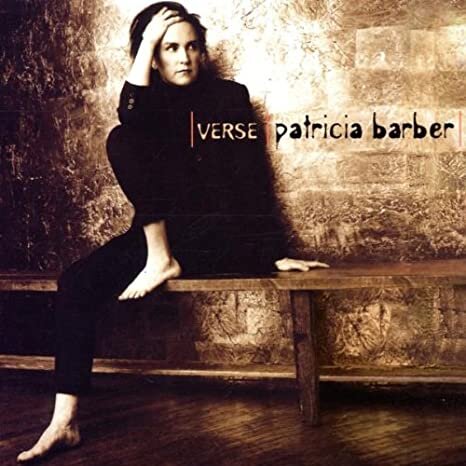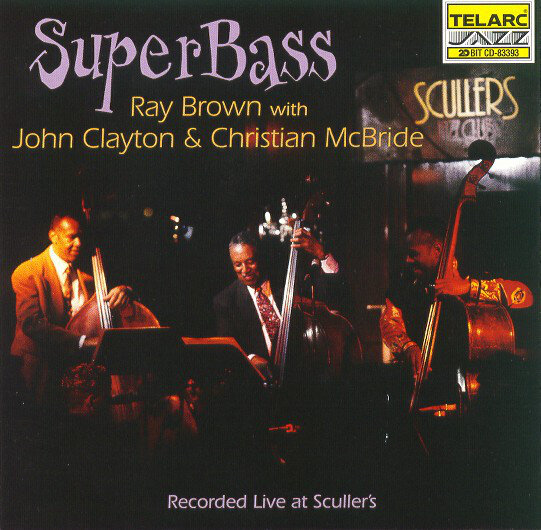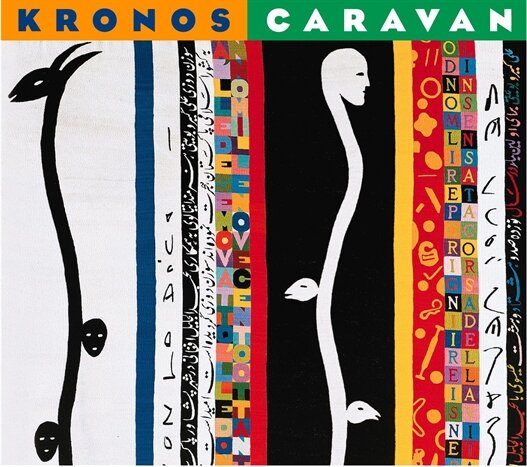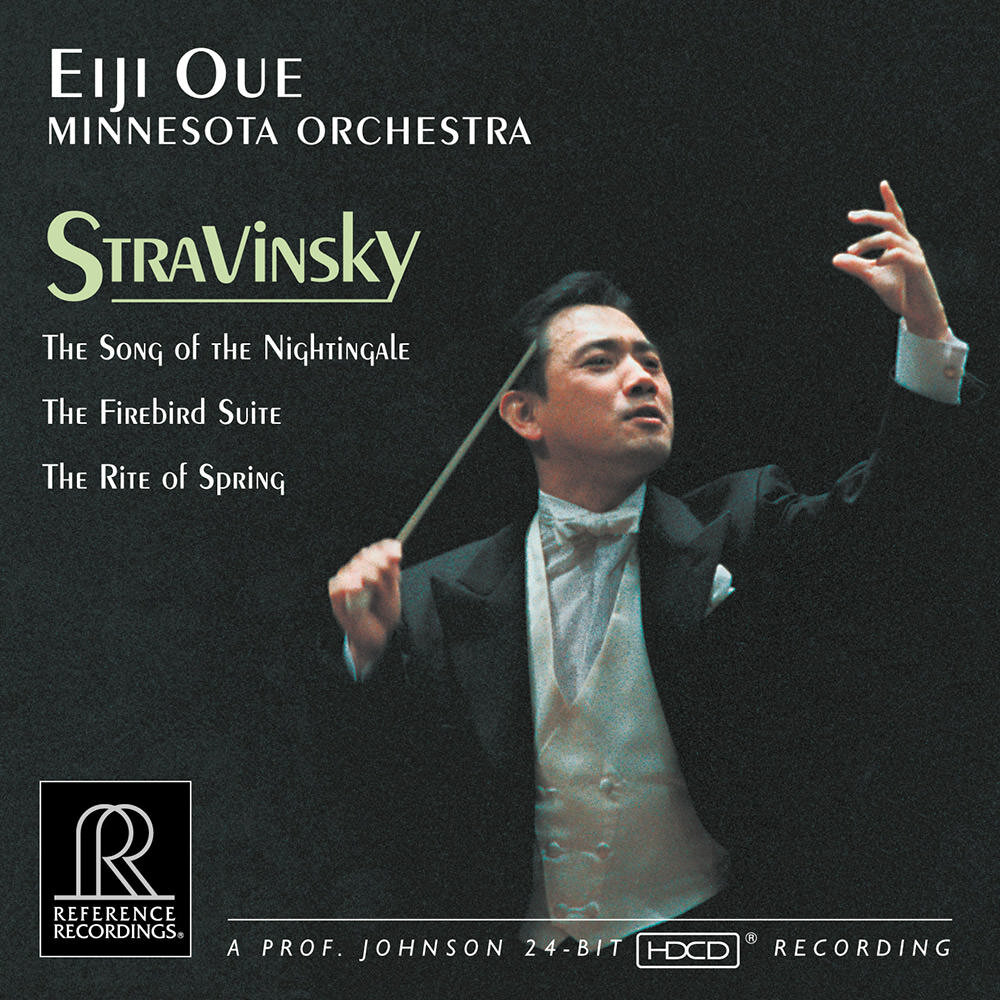VISION EARS ERLKÖNIG -REVIEW
A Precious Metal (Silver), Tunable Flagship!
The In-Ear-Monitor (IEM) company VISION EARS was founded by Marcel Schoenen, a former guitarist and singer for the band SUIDAKRA (folk-metal), and Amin Karimpour, a design and IEM enthusiast with an “exceptional love for detail.” The two met while working for a leading German IEM company. And it would be a shared vision—for quality, product design, and customer service—that would see Marcel and Amin starting their own IEM company, a number of years later.
In 2013 “with a small bag of money and a way bigger bag of cojones,” the duo launched VISION EARS, nestled in Cologne’s central south region, near Germany’s western border. Shortly thereafter their vision and enthusiasm would draw to them a team that was as passionate about IEMs as were they. And in 2014 VISION EARS introduced its first two products—the VE6 and the VE6 Xcontrol—to wide acclaim. Over the ensuing years the company would produce a number of IEMs—VE2, VE3, VE4, VE5, VE8—and various custom in-ear-monitors (CIEMs), that would likewise gather acclaim and near cult status across Europe. Fast forward to April, 2021 and by all accounts and measures VISION EARS has happily left behind startup-status and has enjoyed a, decidedly, good run of both its universal and its custom IEMs. Its latest Universal IEMs are the ELYSIUM, the EVE 2020, and, the ERLKÖNIG (sold out) currently under review.
The ERLKÖNIG like the EVE 2020 is a Limited Edition IEM whose retail ‘life’ is limited to one year and then it is retired once the lot has been sold through or the year in question has ended. And again, like the EVE 2020, the following year will see a new universal model that is both different in “concept and tuning,” which might incorporate more drivers or less, hybridization or not, but always with a unique design aesthetic.
Vision Ears refers to the ERLKÖNIG as follows:
“All the game changing features which elevated the ERLKöNIG to its legendary status stay untouched. Choose your preferred sound with the 4-way switch. Express yourself with a luxury collection of meticulously designed faceplates. Enjoy your music and the outstanding sound with staggering precision and clarity, served by a powerful engine of 13 BA drivers.
We are very proud of our unique sound composition which has been created with great attention to detail and fine-tuning.”
The ERLKÖNIG does indeed provide a number of tuning options, which lie beneath the easily removed, fancy, magnetic faceplates, which in many ways represent a tweaker’s delight.
REFRAIN: Unlike most reviews, this review will be non-sequential, as it will start with how the headphones actually sound and not the process of physically “undressing” them and/or laying out their various parts, specifications, etc. Think of this review then, as a non-linear movie—Memento, Kill Bill, Arrival, Eternal Sunshine of the Spotless Mind, The Terminator, Dark City, In the Shadow of the Moon, etc—that, likewise, starts at the end and winds its way to the beginning.
The Sound
The Vision Ears ERLKÖNIG came fully burned-in, an actual treat!
The ERLKÖNIG is a tunable IEM in that it has four settings hidden beneath its faceplates. These settings allow for a certain customization, though I found but one—setting #2—that was musical and with a good measure of bass. But like all of the other settings there was little if any sub-bass reach and a decided lack of tautness and drive across all settings. It was thus the typical Balanced Armature (BA) sub-bass that is seldom satisfying.
However, the ERLKÖNIG’s magic lies within its midrange and, interestingly, only at setting #2, where the overall balance of its strengths lie. Across the midrange there was the Vision Ears signature voicing— naturalness, good transparency, a black-quiet background, and very good articulation. Though given its price point, which is at odds with its overall performance, there is an upside down value proposition here.
As I’ve reviewed (and passed on reviewing) a growing number of BA-enabled IEMs stuffed with ever-increasing numbers of BA drivers, I am reminded of the phrase, “less is more.” Few are the engineers, apparently, that can pull this off to a technically proficient and musically satisfying outcome. And as I’ve experienced the various hybridized versions, it would seem that a dynamic driver with powerful magnets (not inexpensive) have been the salve to make BA designs more robust, musical, technically competent, and, at the very least, engaging. Vision Ears accomplished this beautifully in its ELYSIUM IEM, where a dynamic driver was utilized in its midrange, of all places, but to great affect! And despite its EVE2020 utilizing 6-BAs there is an engineering magic here, that renders wondrous music and transparency and engagement even with all BAs!
The Vision Ears ERLKÖNIG’s volumetric cube—its soundstage—is of good width, depth, and height, though at its price point one expects a great deal more. And there are quite a few flagship IEMs, at half its price that better it, substantially. The ERLKÖNIG’s positioning, layering, and separation are also quite good and summon the intimate, the concert stage, or the concert arena, when called for.
The Vision Ears ERLKÖNIG’s was reviewed in single-ended mode (3.5mm), with its stock cable, and the medium-sized, Spinfit eartips, and on setting No. 2. The ERLKÖNIG’s was partnered to the Shanling M8 and the iBasso DX220/AMP1 Mk II.
BASS
Eiji Oue’s The Firebird Suite (1919 version): VII Finale (Stravinsky, Reference Recordings) plays, a favorite for bass and sub-bass determination, and tympani. Typically, there is a sub-bass rumble and roar at certain points across this recording. The ERLKÖNIG’s rendering of bass is good, not great. However, its sub-bass could be said to be missing in action, entirely. As I wrote in a previous review of the Vision Ears EVE2020:
“Reviews, of course, are subjective and systems synergy is as the dark matter in the room that few appear to see or, perhaps, comprehend in terms of its affect upon the system.”
This is, of course, a way of saying, perhaps, we did not have the product—DAC, Headphone amplifier, etc.—that was its symbiotic mate. Which is why we don’t do destructive reviews. Suffice to say, given our rather good library of electronic components, the sub-bass could not be found with the ERLKÖNIG’s.
Midrange
The ERLKÖNIG’s midrange, however, was splendid! On Kandace Springs’ 68 (Indigo, Blue Note) her voice was textured, centered, warm, of great tonality, and beautiful rendered. There was transparency, naturalness, and a transient quickness that brought very good detail of soundstage volume—depth, width, and height, layering. Kandace’s voice was centered and ethereal and textured. Lovers of music will be well rewarded via the ERLKÖNIG’s midrange.
Treble+
The ERLKÖNIG’s treble, however, while quite good did not appear to be of flagship status and it certainly did not mirror its price point. But again, perhaps we did not possess in our library of electronic goods its symbiotic mate here either. Vilde Frang’s Violin Concerto in D Major Op. 35 (Britten Korngold, Warner Classics) was presented with great transparency and thus resolution and detail. The highs were rolled off but sweet, natural, and quite engaging. And the stage was again rendered with good overall volume. This was true, however, only with the No. 2 tuning. The over “tunings” went from chronically sibilant to harsh to, at times, compressed and unlistenable. Number 2 is the ticket here.
The Wrappings and Accessories
We were not shipped the full ERLKÖNIG package so I can only relate to you what I have seen across the internet. The Vision Ears ERLKÖNIG comes in a rather striking, natural wood, inner box, with three inner compartments, that hold the ERLKÖNIG with wires attached in the center compartment. The other two compartments serve as holders for potential, custom faceplates. Beneath this top shelf rests a black, cardboard box designated “Eartips,” a screwdriver for removing the faceplates, a portable, leather, carrying case, and a leather strap for securing the ERLKÖNIG when traveling.
I, on the other hand, received a small, nicely made, aluminum, carrying case with the ERLKÖNIG name and an emblem set together in a badge atop the case. And nicely housed within this case was found the various items first listed above.
The luxury case and the travel case sent to reviewers are both very nicely done, well equipped, and, perhaps, in line with a Flagship IEM that is constructed of solid silver. The packaging, overall, is beautifully executed.
Design—Look, Feel, and technology
The Vision Ears ERLKÖNIG is exceptionally well made and its body is constructed of solid silver, perhaps, this is one reason for the $4,500 price tag, but then as silver appreciates, so too will your investment! The design is smooth, completely without edges, and like its brethren—EVE2020, ELYSIUM—it is flawlessly executed.
The ERLKÖNIG is, by no means, a small IEM, though its nozzle is of a relatively medium size. Unlike its VISION EARS siblings, it is not as eartip sensitive and can be worn to good affect with a range of eartips. However, the ERLKÖNIG will not sit flush in one’s ears (if small or medium sized) and given its price and its in-ear obviousness, it is, probably, an at home IEM.
The Vision Ears ERLKÖNIG utilizes thirteen (13) Knowles Balanced Armature (BA) drivers in a five-way configuration, which houses four (4) bass, four (4) mid, four (4) high, and one (1) Super Tweeter BAs. The ERLKÖNIG cable is a Vision Ears “reliable standard,” which is constructed as a 4-wire, silver-plated, copper, wrapped in a black jacket, with a 3.5mm jack termination.
The ERLKÖNIG is a minimalist, understated design that is, nonetheless, ear-jewelry beautiful in its smooth, precious-metal way. And the ERLKÖNIG is also an investment, should the world someday go south.
The ERLKÖNIG’s sound profile or its voice is tunable via four numerical designations—1, 2, 3, 4—hidden beneath its magnetic, face shells, that represent additive or subtractive bass, sub-bass, a warmer or less warm midrange, or a more neutral overall presentation. In truth, as written above, the only tuning that we found listenable was the No. 2 tuning, as all others were, well, problematic to varying degrees. That this is the standard setting, of course, makes a good deal of sense.
The Specifications
Driver Type: 13 Balanced Armature Drivers (5-Way):
4-Bass
4-Mid
4-Treble
1-Super Tweeter
Freq. Res.: 15Hz-45 kHz
Sensitivity: 105dB (@1kHz)
Impedance: 16Ω
Plug Size: 3.5mm gold-plated
Cord: Black, 4-wire, silver-plated copper
Cord length: 1.2m
Drivability
The Vision Ears ERLKÖNIG has a very low impedance (16Ω -Ohms) and a relatively high sensitivity (105dB). The ERLKÖNIG are, as a result, very easy to drive and they work well with numerous devices ranging from smartphones to computers to DAPs to desktop systems.
Comparisons
It came down this time to three songs that would be utilized to differentiate the various IEMs. The various IEMs were partnered to the iBasso DX220/AMP1 MkII.
The comparisons were done using the following tracks/songs:
Vilde Frang’s Violin Concerto in D Major Op. 35 (Britten Korngold, Warner Classics)
Kandace Springs’ 6.68 (Indigo, Blue Note)
Eiji Oue’s Firebird Suite V. Infernal Dance of King Kashchey (Stravinsky, Reference Recordings)
MEZE RAI PENTA ($1099)
The Meze Rai Penta rendered Vilde Frang’s Violin Concerto in D Major Op. 35 with great extension coupled to a very sweet and engaging treble, that was completely free of sibilance. And there was a wonderful vein of warmth that ran across the Rai Penta’s frequency range as well, but its transparency was, nonetheless, exceptional. Kandace Spring’s voice on 68 via the Rai Penta was ethereal, textured, warm, and soulful. And the Rai Penta’ bass was spectacular! Eiji Oui’s Firebird Suite V. Infernal Dance of King Kashchey rumbled, was taunt, and the sub-bass was easily acquired with the iBasso DX220 AMP1 MkII in tow. This was something that the ERLKÖNIG could simply not match. Though the ERLKÖNIG midrange brought another level of warmth to the midrange that was quite special.
MMR GAÉBOLG ($1199)
The MMR GaeBolg rendered Vilde’s Violin Concerto in D Major Op. 35 with great resolution, extension, and it too was beautifully engaging. The GaeBolg’s treble performance was not rolled off, nor was it harsh or strident. However, the ERLKÖNIG’s treble was a wee bit better still, eminently more engaging, and natural. On Kandace Springs 68 the MMR GaeBolg was transparent, it unveiled excellent tone/timbre, and provided for a weighty lower midrange foundation, that was very addictive. Again, the ERLKÖNIG was on a level above the GaeBolg’s and the words that describe the midrange are very similar to those that defined its treble—natural, engaging, highly resolving, and just plain beautiful. Kandace’s voice on this track was all these things and palpable and ethereal. The GaeBolg and the ERLKÖNIG were, however, closely matched with regard to bass weight and their inability to find the sub-bass region required by Eiji Oue’s V. Infernal Dance of King Kashchey at all.
NOBLE AUDIO SULTAN ($2900)
The Sultan with foam tips will bring a good deal of extended treble and will not induce listening fatigue. Though in relation to the ERLKÖNIG the Sultan’s treble can be, even with foam tips, congested and a wee bit harsh. The Sultan’s midrange was not quite as natural or as engaging as was the ERLKÖNIG and thus the ethereal nature of Kandace’s voice in 68 was not as three dimensional, nor as real, nor as spellbinding. In terms of bass response or sub-bass reach both IEMs were unable to plumb the depths necessary for rumble or necessary to grasp the Holy-Bass-Head-Grail or the sub-bass. The ERLKÖNIG did deliver good, detailed bass with texture and beauty, that most might well be happy with.
OBRAVO EAMT-2C ($3000)
This is a repeat as it continues to remain true. There are few IEMs, save for the EAMT-2C’s big brother the oBravo RA-C-CU, that can match the EAMT-2C's transparent, musical rendering, natural tone/timbre across any part of the frequency spectrum. From Vilde Frang’s Violin Concerto in D Major Op. 35 to Kandace Spring’s 68 to Eiji Oue’s V. Infernal Dance of King Kashchey the EAMT-2C was stellar and without peer. Its natural tone/timbre, its texture, and its beautifully extended and detailed treble set the benchmark for this comparison. Across all three tracks its soundstage was both deep and wide, its positioning solid. Kandace’s voice was natural of a beautifully delicious tonality and ethereal. It was as if these tracks were rendered closer, at least, to analog, than any other IEM dare. And there was rumble and a taunt, deep bass, as if the EAMT-2C grabbed the sub-bass by the collar, to look it in the eye and smile. The ERLKÖNIG, on the other hand… Yeah, you get it by now.
Compatibility (Synergy)
The ERLKÖNIG on tuning No. 2, its best tuning by far, worked well with both the Shanling M8 and the iBasso DX220 AMP1 MkII, though neither could transport it to sub-bass depth or could equip it to rumble or roar. The midrange, however, with the Shanling was compelling and the treble with DX220 was the most extended experienced.
Conclusion
The ERLKÖNIG is a bit of an enigma. It is priced at $4500 which, in terms of its inability to, truly, provide anything approaching a solid bass, sub-bass foundation is problematic. At $4500 there should be no spectrum across its frequency range that is not superb. To give its pricing perspective, I’ve provided three exceptional desktop systems that can be had for LESS than the ERLKÖNIG’s $4500.
STAX SR-007A ($2205) + STAX SRM-007 TII ($1820) = $4025
MEZE EMPYREAN ($2999) + BURSON AUDIO CONDUCTOR 3 ($1399) = $4398
ROSSIN AUDIO RAD-0 ($2600) + MERASON Frérot DAC ($1,250.00) = $3850
Is the ERLKÖNIG a good IEM? Yes. Is it worth the price of admission? In our very subjective opinion, no. It appears on the whole upside down from a cost perspective, which given it unavailability makes this a rather moot point. Perhaps in its next iteration, a hybridization that includes a dynamic driver manning the bass department would complete things. Though pricing may also need to be reconsidered, in our opinion.
Pros: Wonderful midrange on setting No. 2. Good, sweet highs.
Cons: PRICE. Sub-bass.
The System(s)
1.
iBasso DX220 AMP1 MkII
2.
Shanling M8
THE MUSIC
The Company
VISION EARS
ERLKÖNIG ($4500)
VISION EARS
Luxemburgerstr. 51
50674 Cologne
GERMANY
+49 (0)221 - 80064334
info@vision-ears.de

